How to Grow Watercress: Comprehensive Guide from Seed to Harvest
- March 11, 2024
- 0 comment
Watercress, scientifically known as Nasturtium officinale, is a fast-growing, aquatic or semi-aquatic, perennial plant native to Europe and Asia. It is renowned for its peppery flavor and is packed with nutrients, making it a popular addition to salads, soups, and sandwiches. Growing watercress at home can be both fun and rewarding. Here’s how you can cultivate this delightful green in your own space.
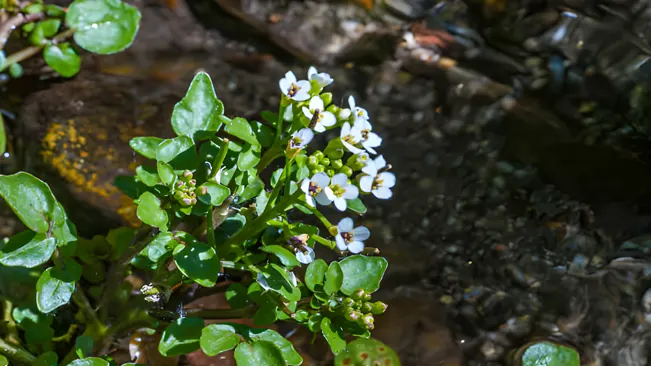
Before diving into cultivation, it’s important to understand watercress. It thrives in water and requires a lot of sunlight. It is a hardy plant that can grow in a water garden or in a pot with consistently moist soil.
Benefits of Watercress
| Benefit | Description |
|---|---|
| Nutrient-Rich | High in vitamins A, C, and K, as well as minerals like calcium and manganese. |
| Antioxidant Properties | Contains antioxidants such as beta-carotene and lutein, which help protect against free radical damage. |
| Supports Bone Health | High vitamin K content contributes to bone health by aiding in bone formation and strength. |
| Enhances Eye Health | The lutein and zeaxanthin in watercress can support eye health by reducing the risk of cataracts and age-related macular degeneration. |
| Cardiovascular Health | Its high dietary nitrate content may lower blood pressure and reduce heart disease risk. |
| Cancer Prevention | Contains compounds like isothiocyanates, which have been studied for their potential to prevent certain types of cancer. |
| Supports Healthy Digestion | High in fiber, which aids in healthy digestion and gut health. |
| Immune System Boost | The high levels of vitamin C help strengthen the immune system. |
| Skin Health | Vitamins A and C are essential for healthy skin, aiding in skin repair and collagen production. |
| Weight Management | Low in calories and high in water content, making it a great addition to a weight loss diet. |
List on How To Grow Watercress
- Choosing the Right Spot
- Setting Up the Growing Environment
- Planting Watercress
- Caring for Your Watercress
- Harvesting Watercress
- Common Pests and Problems
Choosing the Right Spot
Watercress grows best in partial to full sunlight. If you are growing watercress outdoors, select a spot that receives ample sunlight. For indoor cultivation, place it near a window where it gets enough light.
Outdoors
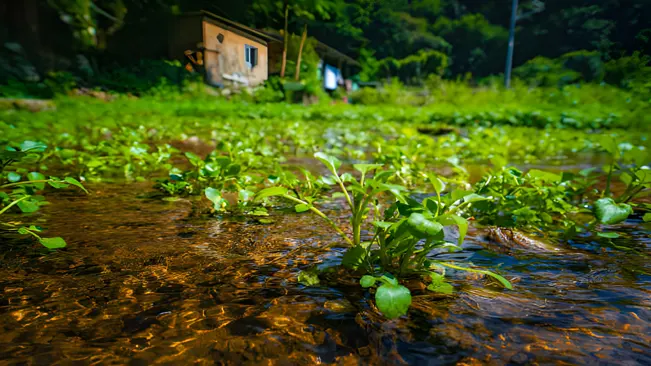
- Sunlight Requirements:
- Watercress thrives in areas with partial to full sunlight. Ideally, it should receive around 4-6 hours of direct sunlight per day.
- Morning sun is particularly beneficial, as it is less intense and won’t scorch the leaves.
- Water Source Proximity:
- If you’re growing watercress in a natural water environment (like a stream or pond), choose a spot near a clean, gently flowing water source.
- The water should be shallow and slow-moving, which is an ideal environment for watercress.
- Soil Conditions:
- For soil-based cultivation, ensure the soil stays moist. A location near a water source can be advantageous.
- A spot that naturally retains moisture, like the edge of a garden pond or a naturally damp area of your garden, can be ideal.
- Wind and Exposure:
- Avoid locations that are overly exposed to strong winds, as watercress prefers calmer environments.
- A spot with some natural protection, like shrubs or trees, can provide beneficial shelter.
Indoors
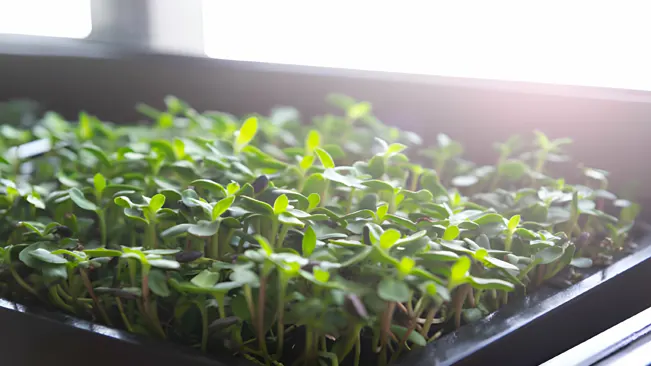
- Light Exposure:
- Place the watercress near a window that gets plenty of sunlight. South or west-facing windows are usually best in the northern hemisphere.
- If natural light is insufficient, consider using grow lights to supplement the light requirements.
- Humidity and Temperature:
- Watercress enjoys a humid environment. Indoor heating during winter can dry out the air, so consider using a humidifier or regularly misting the plant.
- Maintain a consistent temperature; avoid placing it near drafts or heat sources.
- Container Placement:
- Ensure your container or pot is placed in a location where it won’t be disturbed. It’s important for watercress to have a stable environment.
- If growing in water indoors, a tray underneath the container can prevent water from spilling.
Setting Up the Growing Environment
There are two main methods to grow watercress: in water or in soil.
Growing Watercress in Water
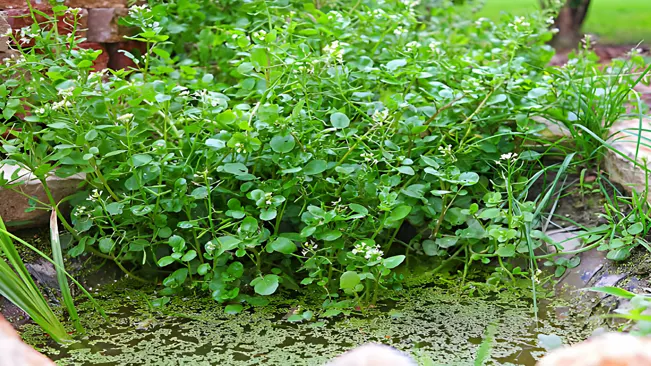
- Choosing the Right Container:
- Select a container that can comfortably hold 4-6 inches of water. This could be anything from a large bowl to a specialized aquatic plant container. The size of the container can vary based on the amount of watercress you want to grow.
- Filling the Container:
- Fill your chosen container with clean, preferably spring or rainwater. Tap water can also be used, but it might need to sit for a day to allow chlorine to evaporate, as chlorine can be harmful to watercress.
- Creating a Natural Environment:
- Adding rocks or gravel at the bottom of your container can help mimic a natural streambed. This step is not just aesthetic; it also helps anchor the roots and provides a surface for beneficial bacteria to colonize, aiding plant growth.
- Placing in Suitable Lighting:
- Position the container in a location where it will receive plenty of sunlight, such as a sunny windowsill, balcony, or outdoor garden space. Watercress thrives in sunlight but can also tolerate partial shade.
- Maintaining the Water Environment:
- It’s essential to keep the water fresh. Regularly change the water (every few days) to prevent algae growth and stagnation. Ensure the watercress is always submerged.
Growing Watercress in Soil
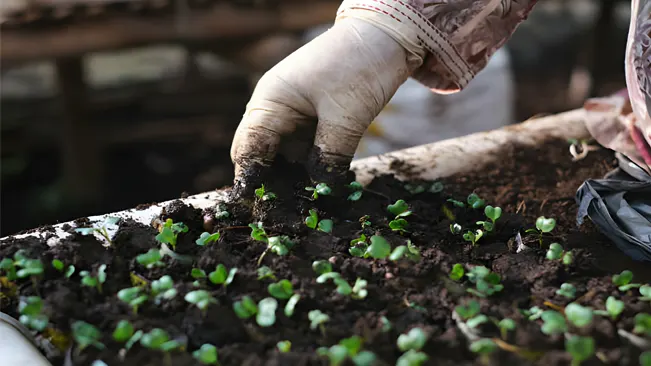
- Selecting an Appropriate Container:
- When growing watercress in soil, choose a pot or container with good drainage to avoid waterlogging. However, the soil should be kept moist at all times.
- Using the Right Soil:
- Fill the container with a high-quality potting mix. The soil should be fertile and retain moisture well. Mixing in some organic matter or compost can enhance the nutrient content.
- Watering Requirements:
- The key to growing watercress in soil is maintaining consistent moisture. Water regularly to keep the soil evenly moist but not waterlogged. In hotter climates, this might require daily watering.
- Location and Sunlight:
- Like the water method, place your soil container in a sunny to partly shaded area. An outdoor garden, patio, or a sunny window can be ideal locations. The amount of sunlight can affect the growth and flavor of watercress.
Planting Watercress
Watercress can be grown from seeds or cuttings.
Planting Watercress from Seeds

- Choosing the Seeds:
- Purchase high-quality watercress seeds from a reputable garden center or online. Make sure they are fresh for the best germination rate.
- Preparing the Growing Medium:
- In Water: Choose a shallow container and fill it with clean, preferably running water. You can use a water tray or a container with a gentle water flow to mimic a natural stream.
- In Soil: Select a pot with good drainage and fill it with a high-quality, moisture-retentive potting mix. The soil should be kept damp but not waterlogged.
- Sowing the Seeds:
- Sprinkle the seeds evenly across the surface of your chosen medium. In the case of soil, you might lightly cover them with a thin layer of soil, but this is optional as watercress seeds need light to germinate.
- Maintaining Moisture:
- It’s crucial to keep the growing medium consistently moist. For soil, use a spray bottle to mist the surface regularly, ensuring it never dries out.
- Germination:
- In 7 to 10 days, you should see the seeds start to sprout. Once germinated, they will need plenty of light, so if indoors, ensure they are placed in a well-lit area.
Planting Watercress from Cuttings
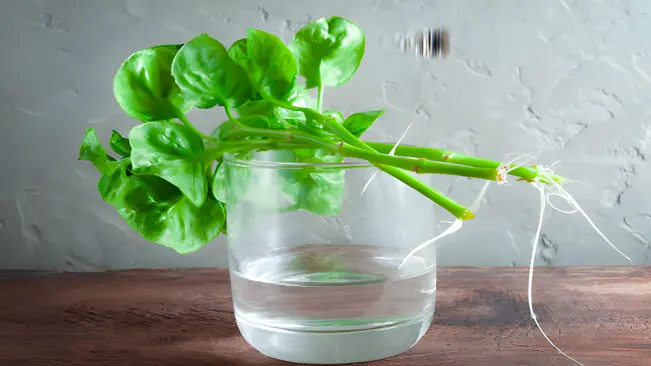
- Obtaining Cuttings:
- You can use stems from an existing watercress plant. Select healthy, vigorous stems for the best results.
- Rooting in Water:
- Place the cuttings in a container of water. Make sure at least one set of leaves is above the water level for proper growth.
- Transplanting:
- Once roots have developed, which can take a week or more, you can transplant the cuttings. They can be moved to a water-based system similar to the one used for seeds, or into moist soil in a pot.
- Caring Post-Transplant:
- After transplanting, continue to ensure the plants have enough light and the soil or water remains consistently moist.
Caring for Your Watercress
Watercress is a plant that thrives in a consistently wet environment. Whether you’re growing it in water or soil, the key is to ensure it never dries out. This plant is naturally found in slow-moving water streams, so replicating these conditions will yield the best results.
Caring for Water-Grown Watercress
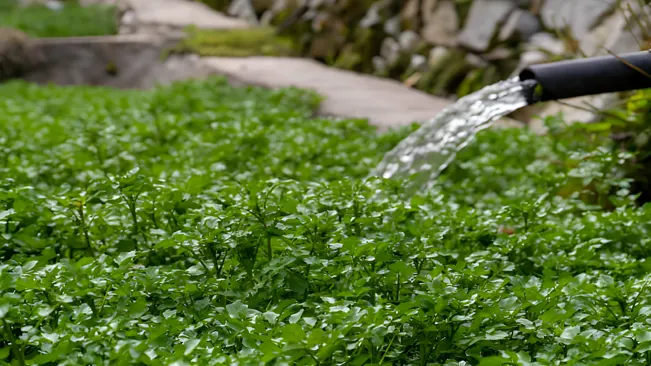
- Water Quality: Use clean, fresh water for your watercress. If possible, use rainwater or distilled water, as tap water can sometimes contain chemicals that might affect the plant’s growth.
- Water Changes: Change the water every few days to keep it fresh and oxygenated. Stagnant water can lead to root rot and other diseases.
- Container Depth: Ensure your container is deep enough to support the plant’s growth. A depth of 4-6 inches is ideal.
- Nutrients: Over time, watercress in water may need additional nutrients. You can add liquid plant food suitable for hydroponic systems, but follow the instructions carefully to avoid over-fertilization.
Caring for Soil-Grown Watercress
- Soil Type: Use a rich, organic potting mix. The soil should be able to retain moisture well. You can also add peat moss or vermiculite to improve moisture retention.
- Watering: Keep the soil consistently moist. During warmer seasons, you may need to water the plant daily. It’s important not to let the soil dry out, as watercress wilts quickly.
- Drainage: While watercress loves moisture, it doesn’t like to be waterlogged. Ensure your container has adequate drainage to prevent water from pooling at the bottom.
Harvesting Watercress
Timing of Harvest
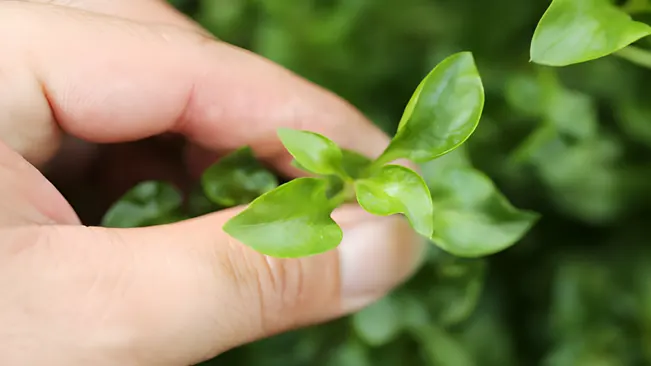
- Watercress grows quickly, and you can typically begin harvesting about three to four weeks after planting. This rapid growth makes it a great choice for those who are eager to see results from their gardening efforts.
How to Harvest
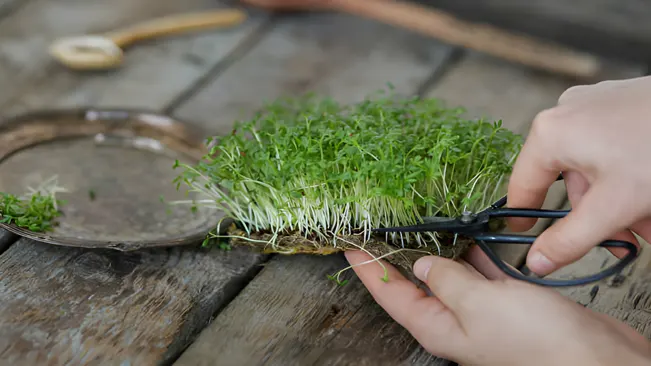
- When harvesting, use a clean pair of scissors or gardening shears. Carefully cut the stems and leaves you wish to harvest. The key is to cut them just above the water level for water-grown watercress, or just above the soil line for soil-grown watercress. This method ensures that you leave enough of the plant intact to continue growing.
Amount to Harvest
- It’s important not to over-harvest. A good rule of thumb is to take no more than one-third of the plant at a time. This leaves enough foliage to continue photosynthesis and supports healthy regrowth.
Encouraging New Growth
- Regular harvesting actually benefits the watercress plant. It encourages the plant to produce new stems and leaves, leading to bushier growth. This can result in a continuous supply of watercress throughout the growing season.
Post-Harvest Care
- After harvesting, it’s crucial to continue caring for the plant. Keep the water or soil moist and ensure the plant gets enough light. If you’re growing watercress in water, remember to change the water regularly to keep it fresh and nutrient-rich.
Storing Harvested Watercress
- Freshly harvested watercress should be used quickly, as it doesn’t store for very long. To extend its freshness for a few days, wrap it in a damp paper towel and store it in the refrigerator. For longer storage, watercress can be blanched and frozen.
Uses of Harvested Watercress

- Watercress is versatile in the kitchen. It’s commonly used in salads for its peppery flavor but can also be added to sandwiches, soups, and as a garnish for various dishes. Its high nutrient content makes it a healthy addition to any meal.
Common Pests and Problems
Common Pests in Watercress Cultivation
- Aphids:
- Description: Aphids are small, soft-bodied insects that can be green, yellow, black, brown, or red. They tend to cluster on the undersides of leaves and along stems.
- Impact: They suck sap from the plant, weakening it. This can lead to distorted growth and reduced vitality. Aphids also secrete a sticky substance known as honeydew, which can attract other pests and lead to sooty mold.
- Control: A gentle insecticidal soap or neem oil can be effective. You can also encourage natural predators like ladybugs. Spraying water can sometimes dislodge them.
- Snails and Slugs:
- Description: These are common garden pests, especially in moist environments which watercress thrives in.
- Impact: They chew on the leaves, leaving irregular holes and can cause significant damage, particularly to young plants.
- Control: Handpicking during evening hours, using barriers like crushed eggshells, or setting up beer traps can help. There are also eco-friendly slug pellets available.
Common Problems in Watercress Cultivation
- Water Quality:
- Issue: Poor water quality can lead to poor plant health. Stagnant, dirty, or chemically contaminated water affects growth and flavor.
- Solution: Ensure the water is clean and refreshed regularly. If grown in soil, keep the soil moist but not waterlogged.
- Drying Out:
- Issue: Watercress dries out quickly and can wilt or die if not consistently moist.
- Solution: Monitor water levels closely. If growing in soil, water regularly to maintain moisture.
- Insufficient Light:
- Issue: Lack of sufficient light can lead to leggy, weak plants with poor flavor.
- Solution: Position the plants in an area that receives partial to full sunlight. If growing indoors, consider supplemental lighting.
- Temperature Sensitivity:
- Issue: Extreme temperatures (either too hot or too cold) can stress the plant.
- Solution: Provide shade during the hottest part of the day and consider bringing plants indoors or provide protection during cold snaps.
- Disease:
- Issue: Watercress can be susceptible to fungal diseases, especially in overcrowded conditions.
- Solution: Ensure good air circulation and avoid overhead watering to keep foliage dry.
Conclusion
Growing watercress at home is a simple and enjoyable process. Whether you have a garden, a balcony, or just a sunny window, you can enjoy this peppery green fresh from your own grow space. Happy gardening!
FAQs (Frequently Asked Questions)
- Can watercress be grown in any type of water?
Watercress prefers clean, nutrient-rich water. Avoid stagnant or polluted water as it can affect the plant’s growth and taste. - Does watercress need full sun to grow?
Watercress grows best in partial to full sunlight. It can tolerate some shade, but too little light will result in weak growth. - How long does it take for watercress to grow from seed?
Watercress seeds typically germinate in about 7 to 10 days. The plants are usually ready for a first harvest in three to four weeks. - Can I grow watercress indoors?
Yes, watercress can be grown indoors. Ensure it has enough light, such as near a sunny window, and keep the soil or water it’s growing in consistently moist. - What is the best way to plant watercress?
Watercress can be grown from seeds or cuttings. Planting it in a container with water or moist soil are both effective methods. - How often should I change the water in my watercress container?
If growing in water, change the water every few days to prevent stagnation and promote healthy growth. - What kind of soil is best for growing watercress?
If planting in soil, use a high-quality potting mix and ensure it stays consistently moist. - When is the best time to harvest watercress?
Harvest when the plants are about 3-4 weeks old. Cut the stems and leaves just above the water level or soil to encourage new growth. - What are the common pests that affect watercress?
Common pests include aphids and snails. Use a gentle insecticidal soap for aphids and handpick snails if necessary. - Can watercress survive in cold weather?
Watercress is a hardy plant but prefers cooler temperatures over extreme heat. It can tolerate light frosts but may need protection or to be brought indoors in colder climates.

Kristine Moore
Forestry AuthorI'm Kristine Moore, a seasoned garden landscaping professional with over 30 years of experience. My extensive career has been dedicated to transforming outdoor spaces into stunning, sustainable landscapes. With a deep understanding of horticulture, design principles, and environmental stewardship, I have become a respected figure in the field, known for creating harmonious, visually appealing, and eco-friendly gardens. My commitment to excellence and continuous learning in landscaping trends and techniques has solidified my reputation as an expert in garden design and implementation.










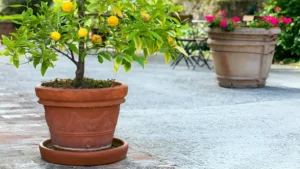


Leave your comment